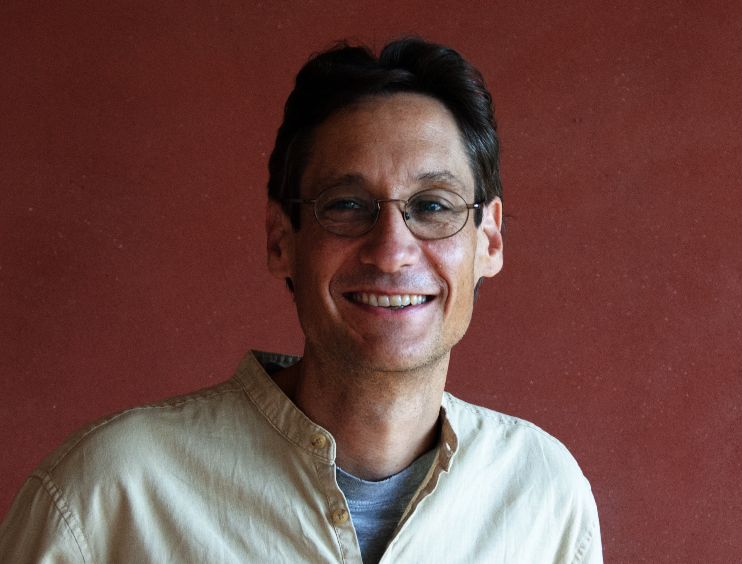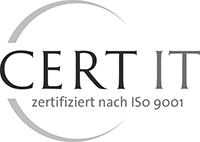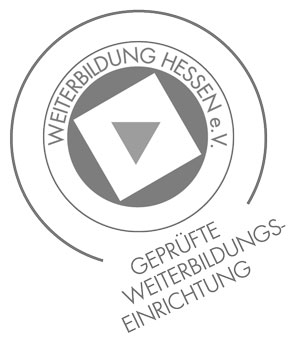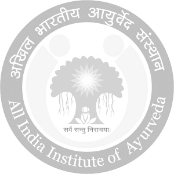Article by Marco Lebbing, General Practitioner and Medical Ayurveda Specialist
Skin inflammations with itching (eczema) are annoying diseases for the patient as well as for the therapist. The former suffer from the chronic and frequently recurring symptoms, which not infrequently cause additional psychological stress. Therapeutically, a lack of basic treatment approaches or frustrating treatments repeatedly present the therapist with problems. Conventional medicine therefore often resorts to local cortisone treatment for symptomatic treatment.
At this point, we would like to present two papers by Mandip Kaur and H. M. Chandola from Gujarat Ayurved University, which examine an Ayurvedic treatment approach in more detail. In the study "Effect of Shirishadi Decoction and Snuhyadi Lepa on the patients of Vicharchika (Eczema)" published in AYU (An international quarterly journal of research in Ayurveda) in 2009, they were able to prove a positive effect of local oil application in combination with an internal administration of a plant decoction. This was followed in 2010 by the study "Role of Rasayana in Cure and Prevention of Recurrence of Vicharchika", which investigated the effect of a complementary regenerative and strengthening (Rasayana) treatment on the recurrence of symptoms after therapy. While the usability of the studies is limited by flaws, they offer interesting avenues for further consideration.
Eczema - How does it manifest?
In conventional medicine, eczema is divided into an acute and a chronic form. The acute form is characterized by redness, swelling, blistering and weeping secretion. The chronic form shows thickening of the skin, scaling and coarsening of the skin patches (lichenification). The changes can occur partly overlapping in the different stages of the disease and are accompanied by a more or less pronounced itching. Fine tissue inflammations of the upper skin layers are found and there is often an allergic component. The authors contrast this with the term " vicharchika" used within the classical classification of minor skin manifestations (kshudra-kushtha) and list the following descriptions from the three major Ayurvedic scriptures (brihat-trayi) to show the similarities:
- excessive itching (ati-kandu)
- inflammation of the upper layers of the skin (bahu-srava or lasikadhya)
- dryness (rukshata)
- Thickening and increased pigmentation of the skin (shyava-pidika)
- coarsening of the skin relief (raji)
Vicharchika is described by the authors as a disorder of the blood tissue (rakta) with Kapha dominated involvement of all three doshas and localization in the skin (tvak). As part of the skin changes described in the classics, they additionally see a chronic component as well as a tendency to worsen in the course (exacerbation).
The ayurvedic therapy
A decoction of six plants was used for internal administration. In the absence of specific recommendations in the classical texts, the authors chose the Lebbek tree (shirisha, Albizzia lebbeck), the Thai eggplant (kantakari, Solanum xanthocarpum) and the hemidemus root (sariva, Hemisdesmus indicus), to which they attributed an anti-allergic effect. They supplemented these with the skin-therapeutic (kushthahara) and itch-relieving (kanduhara) plants Alstonia (saptaparna, Alstonia scholaris), Neem tree (nimba, Melia azadirachta) and tanner or catechu acacia (khadira, Acacia catechu). A decoction was prepared from the coarse plant powder mixed in equal parts according to the classical procedure and administered to the patients in the morning and evening at a dosage of 30 ml.
Since the classical texts recommend additional treatment of the localization (sthana), an oil pack (snuhyadi-lepa) was applied in the area of the skin lesions previously cleansed with warm water. This application, described by Vagbatta in the Ashtanga Hrdaya Samhita, consists of mustard oil with oleander spurge (snuhi, Euphorbia neriifolia) and was applied twice daily.
In the second study, in addition to the above measures, a regenerative treatment (Rasayana) was applied, as recommended by Ayurveda for chronic diseases. Based on described positive effects in the treatment of hives (urticaria), the authors used Guduchi (Tinospora cardifolia) and Bhringaraja (Eclipta alba). In addition to their common antipruritic, tonic, and antioxidant effects, Guduchi is believed to have antiallergic, immunostimulant, and liver-protective activity, and Bhringaraja is believed to have hair-enhancing, anti-inflammatory, rash-counteracting, and blood-enriching activity. Patients were given 6 g twice daily after meals with ghee. Classically, cleansing (shodhana) is recommended before regenerative treatment. Therefore, a gentle bowel cleansing (koshtha shuddhi) was done before starting the treatment. Here, a cold water extract of Aragvadha (Cassia fistula) was used and administered in the evening before bedtime.
Design of the study and results
These were clinical trials with eight weeks treatment duration in 46 and 38 patients out of which 33 and 31 completed the study respectively. In the second study, an eight-day cleansing phase preceded treatment. This was followed by follow-up for two months in each case. The diagnosis was made clinically according to Ayurvedic and allopathic criteria.
Urine and stool examination was done to exclude secondary causes and in suspected cases, skin scratch test was done to exclude fungal diseases. Furthermore, patients with sugar disease were excluded. Blood tests were performed before and after treatment. With otherwise stable values, a significant reduction in eosinophilic white blood cells, which play a role in parasitic and allergic diseases, was detected in both studies.
During the study, the main symptoms were assessed weekly. Both studies were able to demonstrate similar effects, which already began in the first week. Itching and skin secretions improved by approximately 95% after treatment, increased skin pigmentation decreased by 78%, and thickening of the skin improved by 94% in the first and 66% in the second study.
In addition, other symptoms and sensations were recorded before and after the treatment cycle. Burning sensations were reduced by 100%, skin rashes by 93 and 98%, dryness by 97 and 100%, disturbed sleep by 97 and 100%, cracks by 66 and 86%, bleeding by 93 and 84%. Only the parameters "general fatigue and constipation" showed differences in evaluation with 19 and 14% improvement in the first study to 82 and 77% in the second study. All results were reported to be statistically significant.
The effects of the treatment on the diseased tissues (dushya) were also recorded by means of a so-called score. Here, both studies again showed equivalent results with a decrease of the scores for Vata by 68-76%, for Pitta by 92-96%, for Kapha by 62-77%, for the transport spaces for blood plasma, leucocytes, thrombocytes (rasavaha) by 28-48%, for the transport spaces for "red blood" (raktavaha) by 77%, for transport spaces for muscle tissue (mamsavaha) by 74%, for transport spaces for sweat (svedavaha) by 71% and for skin (tvak) by 53-59%.
The overall effect was recorded after therapy using the following classification. "Complete regression" with normal skin was reported by 6 and 7 patients (18-22%) respectively. "Noticeable improvement" with 100% relief of symptoms and still slight skin thickening and pigmentation was reported by 14 and 15 patients (42-48%), respectively, and "moderate improvement" with 50% symptom relief and improvement of skin thickening and pigmentation was experienced by 12 and 8 patients (25-36%), respectively. An "improvement" with 50% symptom relief and little improvement in pigmentation and thickening was reported by one subject (3%) each. No one experienced any change.
Follow-up examinations were seen by 20 and 19 patients, respectively. Here the rate of renewed symptoms, which was still high in the first study after 2 months, was reduced from 80% to 10% in the second study. This effect is attributed by the authors to the additional Rasayana therapy. The authors rightly note that the success of the therapy could have been diminished by the gentler cleansing chosen, as Ayurveda actually recommends the most comprehensive and intensive cleansing possible in such a case.
Analysis of the results
The results presented seem impressive at first. However, some shortcomings must be critically noted. Methodically, the missing control group and a too small number of cases are certainly to be mentioned. The criteria used are only described inadequately or not at all. In particular, the scores used are not explained or made transparent in any way, which makes it difficult to assess their significance. There is no explanation and justification of the subjects dropped from the evaluation. Possible additional measures such as recommendations on diet and behaviour, which can certainly have an impact within an eight-week treatment interval, are also not mentioned.
Nevertheless, interesting indications result from this clinical application observation. In both studies an almost equivalent improvement of the clinical complaints could be achieved and the therapy success could be confirmed independently of each other. The Rasayana treatment significantly reduced the recurrence of symptoms during the follow-up period. This may support the usefulness of its use in chronic or relapsing diseases. The reduced eosinophilic white blood cells in both studies are interesting. This could certainly give rise to further considerations with regard to an anti-allergic and anti-parasitic effect of the preparations used.
As a conclusion, a clear evidence of the treatment cannot be read out of the available studies, however, the obtained results should encourage further clinical trials and further considerations. Overall, a positive effect can be assumed, but this should be confirmed by further reliable studies.
Literature
1. Ayu -An International Quarterly Journal of Research in Ayurveda Year : 2009 | Volume : 30 | Issue : 1 | Page : 16-21 Mandip Kaur, HM Chandola, RESEARCH ARTICLE: Effect of Shirishadi Decoction and Snuhyadi Lepa on the patients of Vicharchika (Eczema) www.ayujournal.org/temp/Ayu30116-170399_044359.pdf 2. Ayu -An International Quarterly Journal of Research in Ayurveda Year : 2010 | Volume : 31 | Issue : 1 | Page : 33-39 Mandip Kaur, HM Chandola, CLINICAL RESEARCH: Role of Rasayana in cure and prevention of recurrence of Vicharchika (Eczema) www.ayujournal.org/temp/Ayu31133-1716296_044602.pdf












